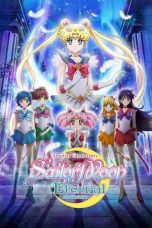- Source: Hokkaido characters
The Hokkaido characters (北海道異体文字, hokkaidō itai moji), also known as Aino characters (アイノモジ, aino moji) or Ainu characters (アイヌ文字, ainu moji), are a set of characters discovered around 1886 on the Japanese island of Hokkaido. At the time of their discovery, they were believed to be a genuine script, but this view is not generally supported today.
Discovery and research
Heikichi Shōji, a member of the Tokyo Anthropological Society (東京人類学会), collected various Ainu artifacts in Hokkaido, including some antiques with characters written on them. Among these, a piece of bark and a sash were introduced in the September 9, 1886 issue of the Mutsu Shimpo (陸奥新報), a local newspaper in Aomori Prefecture, and three days later in the Sendai paper Ōunichi Nichishinbun (奥羽日日新聞). Enomoto Takeaki opined that these must have been characters used by the Emishi a thousand years before. At the 25th meeting of the Tokyo Anthropological Society in December of that year, Shōji displayed pieces of leather, stone fragments, washi (Japanese paper), and a sheath, all inscribed with the characters.
The anthropologist Tsuboi Shōgorō published an article in 1887 in the 12th issue of the Tokyo Anthropological Society Report that used the Hokkaido characters, along with carvings in Temiya Cave and Oshoro Stone Circle in Otaru City, to support his own Koro-pok-guru theory. This theory argued that the Koro-pok-guru, a legendary race of small people in Ainu mythology, were in fact residents of Japan predating the Ainu themselves, and had been forced to the northeast by the immigration of the Ainu's ancestors.
In August 1887, Tsuboi went on to publish an article in the 18th issue of the Tokyo Anthropological Society Magazine entitled Variant Characters on Antique Articles from Around Hokkaido (北海道諸地方より出でたる古器物上に在る異体文字). In addition to stating that the characters were systematically arranged, unlike those at Temiya Cave, and thus represented a script, he further suggested the possibility that these characters were used by people who came to Japan from Eurasia.
In October of the same year, this time in the 20th issue of that same Tokyo Anthropological Society Magazine, Shōji himself released an article called Ancient Characters of Hokkaido and the Aino (アイノ及び北海道の古代文字). Although he admitted that there was no proof, Shōji expressed the view that these characters were likely used by the Emishi in ancient times.
In 1888, the Kokugaku scholar Naosumi Ochiai wrote a book entitled Ancient Characters of Japan (日本古代文字考). Therein he posited that the Hokkaido characters were used by the Emishi people, who neither understood Japanese nor used Kanji. He further produced 14 symbols, combinations of which supposedly composed 50 of the characters, but supposed that it would prove impossible to understand them without knowing their readings. In the appendix on dubious characters in Hirata Atsutane's Shinji Hifumi-den (神字日文伝), he suggested a connection between the Hokkaido characters and Izumo characters, as well as other supposedly ancient characters.
In 1975, Kiyohiko Agō wrote Japanese Jindai Moji (日本神代文字), in which he connected the Hokkaido characters with not only the carvings in Temiya Cave but also those in Fugoppe Cave, in the town of Yoichi.
The Japan Exploration Association (日本探検協会), headed by Takahashi Yoshinori, claims a connection between jindai moji including the Hokkaido characters and an advanced prehistoric society, and further between the Hokkaido characters and the ancient Sumerian and Assyrian civilizations of Mesopotamia. Furthermore, they claim that the carvings in the Fugoppe Cave themselves consist of the Hokkaido characters.
In 2007, the author Harada Minoru, a member of the skeptical group Togakkai (the "Academy of Outrageous Books"), offered the following evaluation:
Perhaps the carvings in Fujishima Cave in Izumo are also rock art of the same type as that of Temiya and Fugoppe Caves. The resemblance between the Izumo characters and the Ainu characters pointed out by Ochiai might even suggest ancient cultural interchange between Hokkaido and the San'in region.
Overview of inscribed artifacts
The names and descriptions of these are mostly from Shōji (1887).
Related characters
= Temiya cave drawings
=By one theory, the rock art discovered in 1866 in Temiya Cave actually consists of written characters. These carvings in Otaru are relics of the continuing Jōmon culture which persisted in the region from the 3rd century BC until the 7th century AD, when it was replaced by Satsumon culture. In 1921, they were designated a national historical landmark. They became public knowledge after an 1878 investigation conducted by Enomoto Takeaki, the secretary of the Kaitakushi (Hokkaido Development Commission) Yamanouchi Teiun, and the British geologist John Milne.
In October 1913, the archaeologist Torii Ryūzō contributed an article to Volume 22, Issue 4 of Historical Geography (歴史地理) entitled Concerning Carved Letters in Temiya, Hokkaido (北海道手宮の彫刻文字に就て). He claimed that the letters were in the old Turkic alphabet, representing a Tungusic languages used by the Mohe people. Moreover, the linguist Nakanome Akira contributed an article to the 71st issue of Shōko (尚古), published in February 1918, entitled Ancient Turkic Letters Preserved in Our Country (我国に保存せられたる古代土耳其文字). Adopting Torii's Turkic theory, he claimed to have deciphered the carvings in Temiya Cave, and that in the Mohe language they read: "... We led our subordinates across the great sea ... we fought ... we entered this cave ..." In that month's Otaru Shinbun newspaper, Nakanome asserted that the Mishihase people subjugated in the Nihon Shoki by Abe no Hirafu were in fact Mohe people, and that Temiya Cave is the ruins of the burial place of their chief, who died in the conflict.
On the other hand, in 1944, the local historian Fumihiro Asaeda published The Ancient Letters of Otaru (小樽古代文字), in which he propounded a theory that the carvings in Temiya Cavern represented ancient Chinese hanzi. By his theory, they were made by people of the Zhou dynasty court, and record that a fleet dispatched on an expedition was visiting the area when the "emperor" (帝) who led them died and was buried. After some calamity occurred, the Zhou held a bloody ritual. He further conjectured that ships from Shang and later Zhou China frequently visited Hokkaido to obtain deer antlers for use in rituals.
In 1972, Asaeda published a further work in which he indicated three more items he believed to contain characters of the same type. He supposed that all of these were ancient records of ceremonies conducted for the dead.
The jindai moji researcher Tatsuo Sōma offered another theory in 1978, when he published Reading Japan's Ancient Scripts (解読日本古代文字, Kaidoku Nihon Kodai Moji). He argued that the carvings in Temiya Cave were made by members of a group of people chased from the Hokuriku region by another group of originating in Baekje. He also shared his interpretations of the meanings of the carvings; Unoke, Noto, Kaga, and the other places he refers to by name are all located in modern Ishikawa prefecture.
Destroy our enemies. We entered this cave to use it as a base. Store up military might. Our gods will kill our enemies without fail.
Attack! At Unoke, and Noto and at Ouchi in Kashima in Kaga, and at Nono and Kaga in Kaga. Smash the barriers and important areas and divide them. Strike at Kaga, captured by our foes, shoot through Hakui and Wajima, good lands where the brutes now gather, and set them afire. Noto, which pokes into the sea; how beautiful our birthplaces, Unoke on the plain of Kaga, Nono, Kaga.
= Fugoppe cave drawings
=In October 1927, rock carvings were discovered on stone walls inside a hill in Fugoppe in the town of Yoichi, by a railroad worker who dug a path through it. Nishida Shōzō, a professor at the Otaru College of Commerce (小樽高等商業学校), called these carvings the "Fugoppe ancient characters", forming a pair with the "Temiya ancient characters" and associating them with the Tsushima characters and old Turkic alphabet. However, the ethnic Ainu folk researcher Hokuto Iboshi argued that the "deformed letters" were instead more recent forgeries, citing their lack of weathering compared to those at Temiya Cave.
Tatsuo Sōma opined that these carvings, like those at Temiya Cave, were made by people driven from the northeast of Honshū. He interpreted their meaning as "Cross the sea and subjugate Suzu. Destroy your enemies and slaughter the brutes."
In 1950, further rock art was discovered in Fugoppe Cave in the same town. These were confirmed, like those at Temiya Cave, to be relics of the continued Jōmon period, and designated as national treasures in 1953. These carvings, like those at Temiya Cave, are sometimes referred to as "ancient characters".
Tatsuo Sōma considered these too as made by the same group that created the carvings at Temiya and at the 1927 Fugoppe discovery. Part of his translation is as follows:
Our prosperous lands of Unoke and Kaga have been stolen by our enemies. Destroy, destroy, destroy our enemies, destroy them completely, smash their castle gates, smash their storehouse gates, one after the other, and thoroughly kill them all.
Kaga, Nono. Attack and defeat the brutes, o gods.Strike at Cape Shaku in Suzu, and the eastern seashore of Kanō; pierce through the belt of Ouchi that unites the western shores of Hakui and Wajima and Noto, great gods.Here swear we, the people of Unoke and Togi.Our king will sit again at Suzu.
The Japan Exploration Association, chaired by Takahashi Yoshinori, contends that the inscriptions on the northern wall of Fugoppe Cave read as "iishishirai" and "kawasakanahakitsu", and mean respectively "edible beasts live here" and "freshwater fish come here".
Notes
References
Further reading
Watase, Sōsaburō (February 1886). 札幌近傍ピット其他古跡ノ事 [Pits and Other Ancient Ruins Near Sapporo]. Anthropological Society Report (人類学会報告) (in Japanese). 1 (1): 8–10. doi:10.14844/ase1886a.1.1_8.
Tsuboi, Shōgorō (February 1887). コロボックル北海道に住みしなるべし [The Koro-pok-guru Lived in Hokkaido]. Tokyo Anthropological Society Report (東京人類学会報告) (in Japanese). 2 (12): 93–97. doi:10.14844/ase1886b.2.12_93.
Tsuboi, Shōgorō (August 1887). 北海道諸地方より出でたる古器物上に在る異体文字 [Variant Characters on Antique Articles from Around Hokkaido]. Tokyo Anthrological Society Magazine (東京人類学会雑誌) (in Japanese). 2 (18): 280–281. doi:10.1537/ase1887.2.280.
Shōji, Heikichi (October 1887). "The neuralgic form of sciatica and its treatment" アイノ及び北海道の古代文字 [Ancient Characters of Hokkaido and the Aino]. Tokyo Anthropological Society Magazine (東京人類学会雑誌) (in Japanese). 3 (20): 21–25. doi:10.1537/ase1887.3.21. PMID 18124316.
Ochiai, Naosumi (1888). 日本古代文字考 [Ancient Characters of Japan] (in Japanese). Yoshikawa Hanshichi (吉川半七).
Nakanome, Akira (1919). 小樽の古代文字 [The Ancient Characters of Otaru] (in Japanese). The Society of Historical Geography (地理歴史学会).
Igarashi, Tetsu (1938). 史跡手宮洞窟の新研究 [New Research on the Historical Landmark Temiya Cave] (in Japanese). Self-published.
Asaeda, Fumihiro (1972). 北海道古代文字 [The Ancient Letters of Hokkaido] (in Japanese). Hokkaido Linguistics Association (北海道言語学協会).
Agō, Kiyohiko (1975). 日本神代文字-古代和字総観 [Japanese Jindai Moji - An Overall Look at Ancient Japanese Characters] (in Japanese). Ōriku Shobō (大陸書房).
Sōma, Tatsuo (1978). 解読日本古代文字 [Reading Japan's Ancient Scripts] (in Japanese). Shin Jinbutsu Ōrai-sha (新人物往来社).
Japan Exploration Association (1995). Yoshinori Takahashi (ed.). 超図解 縄文日本の宇宙文字-神代文字でめざせ世紀の大発見! [(Super Illustrations) Space Letters of Jōmon Japan: Make the Discovery of a Century with Jindai-Moji!] (in Japanese). Tokuma Shoten. ISBN 4-19-860378-2.
Agō, Kiyohiko (1996). 日本神代文字研究原典 [Nihon Jindai Moji Genten] (in Japanese). Shin Jinbutsu Ōrai-sha (新人物往来社). ISBN 4-404-02328-6.
Harada, Minoru (2007). 図説神代文字入門-読める書ける使える (in Japanese). Being Net Press (ビイング・ネット・プレス). ISBN 978-4-434-10165-6.
Kata Kunci Pencarian:
- Jindai moji
- Daftar Pokémon generasi I
- Orang Yayoi
- Aikatsu on Parade!
- Dawn (Pokémon)
- 22/7 (seri televisi)
- Godzilla Minus One
- Love Live! Superstar!!
- Olahraga di Jepang
- Arashi
- Hokkaido characters
- Hokkaido
- Urahoro, Hokkaido
- Hokkaido Consadole Sapporo
- Jindai moji
- Fugoppe Cave
- Ainu language
- Hokkaido Gals Are Super Adorable!
- Mashike, Hokkaido
- Tanno, Hokkaido
Parasite (2019)
Maze Runner: The Scorch Trials (2015)
T-34 (2018)
Oppenheimer (2023)
No More Posts Available.
No more pages to load.














